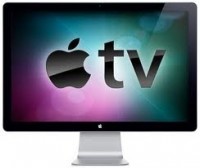A new study from the KAE strategic marketing and research consultancy (http://www.kae.com) says large manufacturers could lose out if Apple launches a physical TV set. Overall, the study highlighted that 25% of consumers in the US find the idea of an Apple-branded HDTV appealing and would buy it once it becomes commercially available.
That compares to 30% in the UK. Consumers that already own at least one Apple device are more likely to buy an Apple TV set, 2-in-5 (US 38% in the U.S. compared to 43% in the UK) find the idea appealing and would purchase should the product become available.
“The huge potential of an Apple TV set, although impressive, should not be seen in isolation,” says Lee Powney, chief commercial officer at KAE. “Such a move would be an incredibly powerful extension of the iOS platform, accessed via a more compelling device option than Apple’s current offering (Apple TV). It would create new monetisation opportunities for developers and accessory manufacturers by bringing the Apple experience further into the home. This would strengthen both the ecosystem and the benefits that consumers derive from owning many differing Apple devices.”
So will Apple do this?
“The pressure to maintain the lion’s share of preference from ecosystem members and create additional device-to-device interaction benefits for consumers means it should do this, and must do this,” Powney says.
Sony, Samsung and LG are the market-leading brands most likely to suffer should Apple decide to launch its mooted Apple TV concept. In the UK, a sizeable 38% of current Sony TV owners and 36% of Samsung TV owners claimed they find the idea of an Apple TV appealing and would buy one. In the US, the brand most at risk from the concept is LG, where 3-in-10 (31%) of owners would be likely to convert should an Apple TV become available.
Approximately 3-in-5 US consumers questioned who were very likely to buy the TV said they trust Apple to produce a high quality TV set (59%), a sentiment echoed by UK consumers (62%). Design also features highly in respondents’ reasons to purchase with over half of all those likely to buy claiming that Apple’s reputation in ground-breaking design would no doubt also be used in TV (52% in US and 58% in the UK).
“Although this wave of research looked only at the USA and UK, we believe that the greatest revenue opportunities in 2013-15 for an Apple TV set are clustered in the ‘home territories’ of Apple’s TV competitors — i.e. Japan, Korea and China,” says David Rankin, managing director of KAE. “We’re excited at the prospect of measuring that potential and the impact that success will have on Apple’s share price.”
Consumers were asked which features they felt an Apple TV set would be equipped with: The top anticipated feature for potential customers of the unconfirmed Apple TV set is similar for both countries, which is the ability to connect to the internet (73% in the US & 75% in the UK). The other top features selected by potential US customers were running apps on TV (44%) and the ability to synchronise automatically with other Apple devices (41%). For the UK market the other two main features expected were the ability to synchronzse automatically with other Apple devices (47%) and for the device to be 3D enabled (41%).



